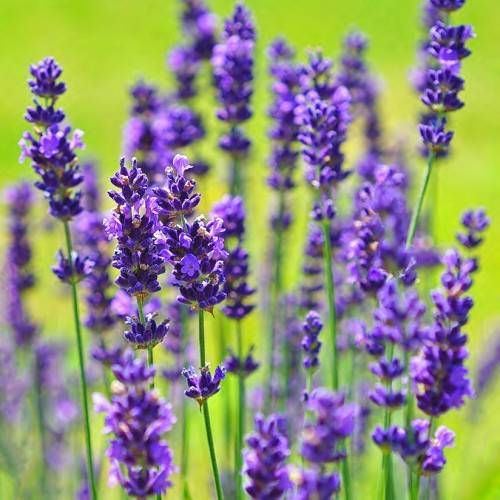
English lavender
Lavandula angustifolia 'SuperBlue'
Cycle:
Herbaceous Perennial
Watering:
Minimum
Hardiness Zone:
5 - 8
Flowers:
Flowers In Summer
Sun:
Full sun
Soil:
Rocky , gravelly , dry, Well-drained
Fruits:
Fruits In Autumn Ready In Summer
Leaf:
Yes
Growth Rate:
Moderate
Maintenance:
Moderate
Drought Tolerant:
Yes
Salt Tolerant:
Yes
Care Level:
Moderate
watering
English Lavender requires moist soil but needs to be well-drained, so it does not do well in standing water. It prefers a slightly acidic soil with a pH between 6.7 and 7.0. Water your English Lavender regularly. When the top 2 inches of the soil feels dry, it's time to water. Avoid over-watering, as this can cause root rot. If you are planting in a container, check the moisture in the soil every few days. In summer, English Lavender requires frequent watering, especially in hot climates. Watering in the morning is best; this will give the plant plenty of time to send its roots deep into the moisture below the surface. During winter, lavender doesn't need as much water. If the days have been hot and sunny, then it will require more water. In cold winter climates, English Lavender usually only needs occasional light watering https://www.gardeningknowhow.com/edible/herbs/lavender/watering-lavender.htm.
sunlight
English lavender (Lavandula angustifolia 'SuperBlue”) does best in full sunlight, meaning it should receive at least 8-10 hours of direct sunlight per day. During the summer months, it may even benefit from a few hours of afternoon shade if it's in a spot that is especially sunny. When grown in containers, English lavender should be moved to a sunny location during the summer months. During the winter months, English lavender should receive at least 6 hours of direct sunlight per day.
pruning
English Lavender should be pruned in early spring, before the new growth appears. Prune lightly, removing any dead stems and shaping the plant as desired. When pruning, take care not to remove more than a third of the plant. Pruning helps to keep it compact and encourages new growth. If English Lavender becomes overgrown, it can be cut back hard in late winter. This will result in a fuller, bushier plant in the following season.
